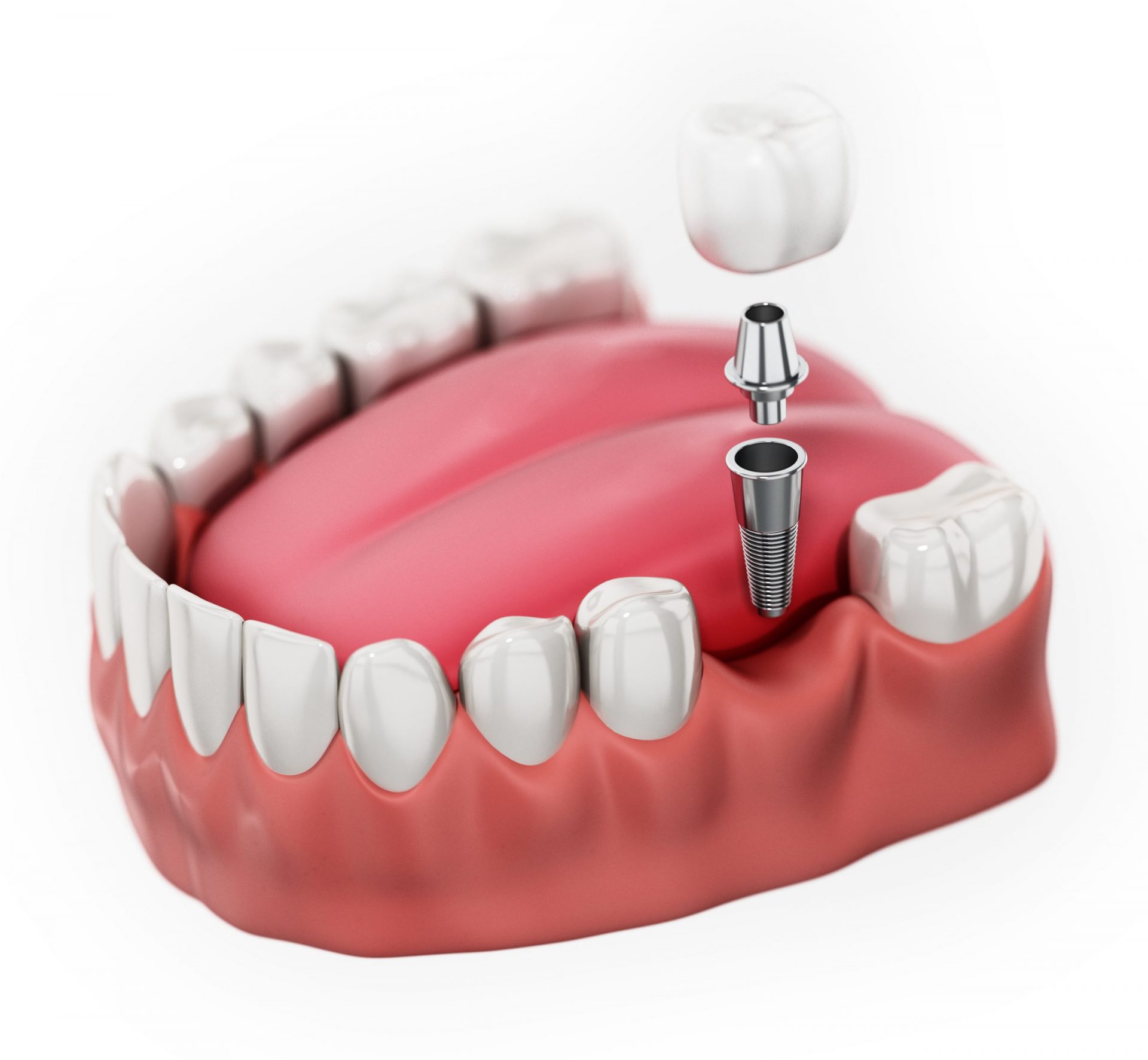An ideal solution for a lost or decaying tooth, a single-tooth dental implant can replace a missing tooth seamlessly. Lost, missing, or damaged teeth can cause patients significant issues. As well as feeling self-conscious about their smile, a missing tooth can lead to further movement in the mouth. Teeth that are next to the gap may start to move, and they may loosen over time. This could affect the visible appearance of your teeth and may lead to more tooth loss in the future.
With single-tooth dental implants, however, you can replace a lost tooth easily. By fitting a replacement tooth via a surgical screw, a dental implant provides a permanent and robust solution.
How Is A Single Tooth Dental Implant Fitted?
When you have a dental implant fitted, your periodontist will affix a small, surgical screw to your jawbone. Sitting where the root of your tooth once gave the replacement tooth something to adhere to. This ensures it will be robust, fully functional, and not subject to subsequent movement. By using a surgical screw to affix the implant, a single-tooth dental implant offers a long-term, stable solution.
Your periodontist will prepare the area and make an impression of your mouth. This enables the specialist dental laboratory team to create a replacement tooth that fits seamlessly. Additionally, your dental implant is color-matched to the surrounding teeth to ensure it’s not distinguishable from your natural teeth.
Will the Dental Implant Stay In Place?
Absolutely. A single-tooth dental implant will remain in place for the long term. In fact, many patients opt for this procedure purely for this reason!
Dental implants are fully functional, and the surgical screw ensures the tooth has a robust ‘root’ to support it. This means you can chew fully using the replacement tooth, without any movement occurring.
Furthermore, the osseointegrated material of the dental implants is biocompatible. This allows the bone in your jaw to grow between the ridges and around the implant itself. Known as osseointegration, this gives your replacement tooth the strength of a natural tooth root and increases its stability.
When Is A Single Tooth Dental Implant Used?
Single-tooth dental implants are suitable for use in almost any situation where a patient is missing a tooth. Any number of reasons can cause a lost tooth such as decay, gum disease, or even an accident.
Depending on what caused your tooth loss, your periodontist may advise waiting a few weeks or months before fitting your implant. This allows the gum and surrounding area to heal fully and may allow for a more precise fit.
How Long Does It Take To Get A Single Tooth Dental Implant?
Providing the area has healed following the loss of the tooth, the periodontist can fit a single-tooth dental implant relatively quickly. After mouth impressions, dental laboratory technicians will get to work creating your replacement tooth. In the meantime, Dr. Trujillo may offer you a temporary denture so that the gap in your teeth is not visible.
Generally, the implant is fitted before the replacement tooth is placed over it. This gives the implant time to integrate with the bone and gives the replacement tooth a strong base.
However, new technology has allowed for the development of immediate dental implants. These types of implants are fitted in just one appointment, thus minimizing the time it takes to rejuvenate your smile. While immediate, single-visit implants may not be suitable for every patient, they do provide a safe and effective way to reduce treatment for a considerable number of patients.
What Aftercare Will I Need?
As dental implants are fully functioning, patients are normally advised to care for them as they would any other tooth. Regular brushing, flossing, and professional cleaning can help to increase the lifespan of your implant, as with any tooth. In fact, it is the minimal aftercare and maintenance which attracts many patients to implants. Once fitted, your dental implant should remain in place for up to a lifetime. Although your periodontist will provide specific care instructions, most patients simply need to follow a normal dental hygiene routine.
What If More Than One Tooth Is Missing?
Although dental implants can replace just one missing tooth, they can also replace many missing teeth. If you have lost a few adjoining teeth you could have a single implant with a fixed bridge. The implant firmly anchors the bridge while the bridge replaces your missing teeth.
Similarly, it is possible to use a single dental implant as an anchor for dentures or other dental solutions. By minimizing the number of implants required, a single implant can actually resolve a myriad of dental issues.
What Are The Benefits of A Single Tooth Dental Implant?
Dental implants offer numerous benefits for patients. They are fast becoming one of the most popular dental treatments in America. Dental implants are permanent, so it’s unlikely you’ll need to have them replaced. Additionally, they are strong and robust, so you won’t need to avoid chewing or biting down on them. Furthermore, they don’t require special aftercare and match your natural teeth.
With so many benefits, it’s no surprise that dental implants are one of the most popular solutions for missing teeth.
Schedule An Appointment Today
If you have considered a dental implant to replace a missing tooth, schedule an appointment with Dr. Trujillo today. He is happy to sit down with you to discuss options about your individual case. He can find a solution to restore your smile and bring back your self-confidence. All of us at Arizona Periodontal Group look forward to meeting you!





